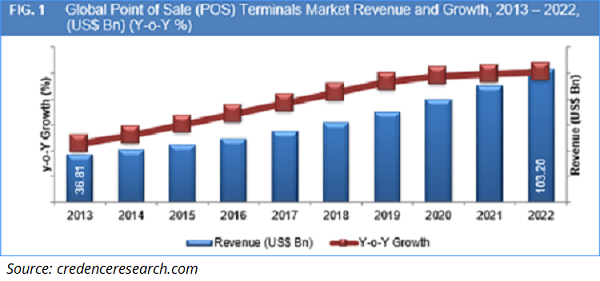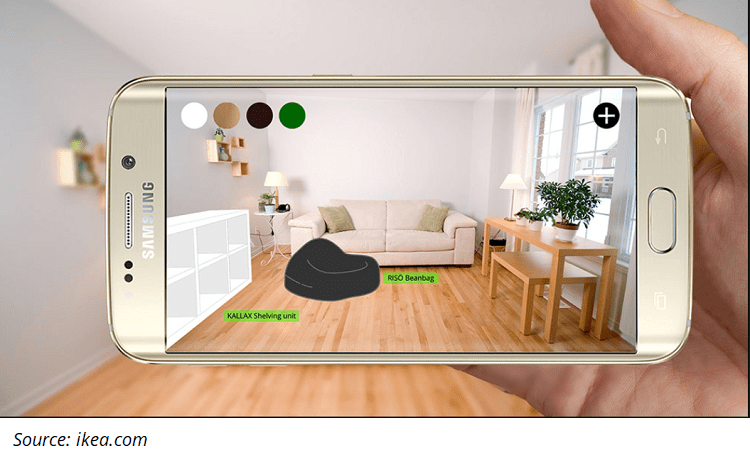Digital Innovations powered by technology have revolutionized the world we live in. Technology has driven innumerable opportunities with endless resources that have transformed businesses. With the emergence of Industry4.0, industries are harnessing the power of digitization to improve their overall efficiency, operations, and revenue. One such forward-looking sector is Retail.

As digital and in-store experiences blur and become more consistent, digital innovations open new possibilities for retailers. Point of Sale (POS) systems have changed the face of the retail sector, making purchasing and maintaining inventory more accessible. The emergence of digital/mobile POS has significantly enriched customer satisfaction and shopping experience.
Technohttps://www.hsc.com/innovation/accelerators/video-image-analytics-civa/”>video and image recognition, artificial intelligence, blockchain, and IoT have transformed traditional POS systems to align according to the needs of today’s retail businesses and customers.
Here are some of the trends in the Point-of-sale system for the retail market:
Retailers are investing in device-to-cloud IoT solutions, secure and reliable gateways, intelligent embedded modules inside PoS, and comprehensive cloud and managed connectivity services.
For instance, Amazon’s Dash Buttons facilitate purchasing of everyday products with the press of a button. Amazon has tied up with over 200 partners so that they sell their products via these dash buttons, which serve as a digital PoS for the users.
Beacon technology allows retailer-owned mobile apps to listen for signals from nearby beacons using Bluetooth technology. Thus, they deliver hyper-contextualized content to users based on their location with check-out features. These check out features have revolutionized PoS with the convenience of in-store shopping and mobile checkout.
For instance, Macy’s in association with Shopkick, rolled out retail’s largest beacon installation in its stores nationwide to install 4,000 shopBeacons. As shoppers entered Macy’s, they received push notifications on their smartphones to open their Macy’s apps to receive promotions, deals, and discounts.
Chatbots are automated, intelligent assistants that drive the conversation with the user on the digital platform. They begin these interactions with the user by asking and answering simple questions. With Natural Language Processing powered by AI and ML algorithms, they can learn and also handle complex tasks such as providing product recommendations to the user and facilitating payments.
For instance, the H&M bot in their Kik messaging app enables customers to create their style theme to provide personalized recommendations to the customer. The bots also send abandoned cart notifications to facilitate in-app purchasing.
Augmented Reality can help retailers collect more information about customers which, when used in conjunction with an efficient POS system, can help deliver personalized loyalty programs and rewards.
Ikea’s “IKEA Palace” – a mobile app available on the App Store and powered by AR enables customers to virtually place the furniture in their home setting and decide if they want to purchase it. The virtual table is resizable to fit any corner of the room.

Voice assistants such as Alexa, Cortana, Google Assistant, and Siri have changed how people interact with their devices. Retailers are adopting this technology to enhance the customer experience through voice ordering.
Customers can ask Google Home and Alexa to add products to their online shopping cart. The apps search for the customer’s preferred brand and pack size before adding it to the online shopping basket, select a delivery slot, and check out the order.
For instance, Starbucks rolled out voice recognition ordering through mobile order-and-pay technology by integrating with Samsung’s AI chatbot, Bixby. Customers use their phones to order a drink that suits their taste.
Many players in the retail sector are increasingly adopting POS systems driven by image recognition technology, where customers don’t have to pay while checking out in a retail store.
For instance, Amazon’s cashier-less store, Amazon Go, uses cameras and sensors on shelves, as well as a computer vision system, to scan the items a customer purchases and automatically charge them to the shopper’s Amazon account.
A new Point-of-sale (POS) app designed by ZAP allows merchants to accept transactions on the Lightning Network independently. The Lightning Network is a technology that adds another layer to Bitcoin’s blockchain and enables users to create payment channels between any two parties on that extra layer.
Zap’s new PoS was recently tested at a Chicago cocktail lounge. The lounge admin uploaded the menu onto the mobile app and allowed customers to use a QR code for tipping.
As customer preferences and expectations are evolving, so should the retail market. They can use these latest technological advancements with their POS system to ensure a delightful customer experience and increased sales.